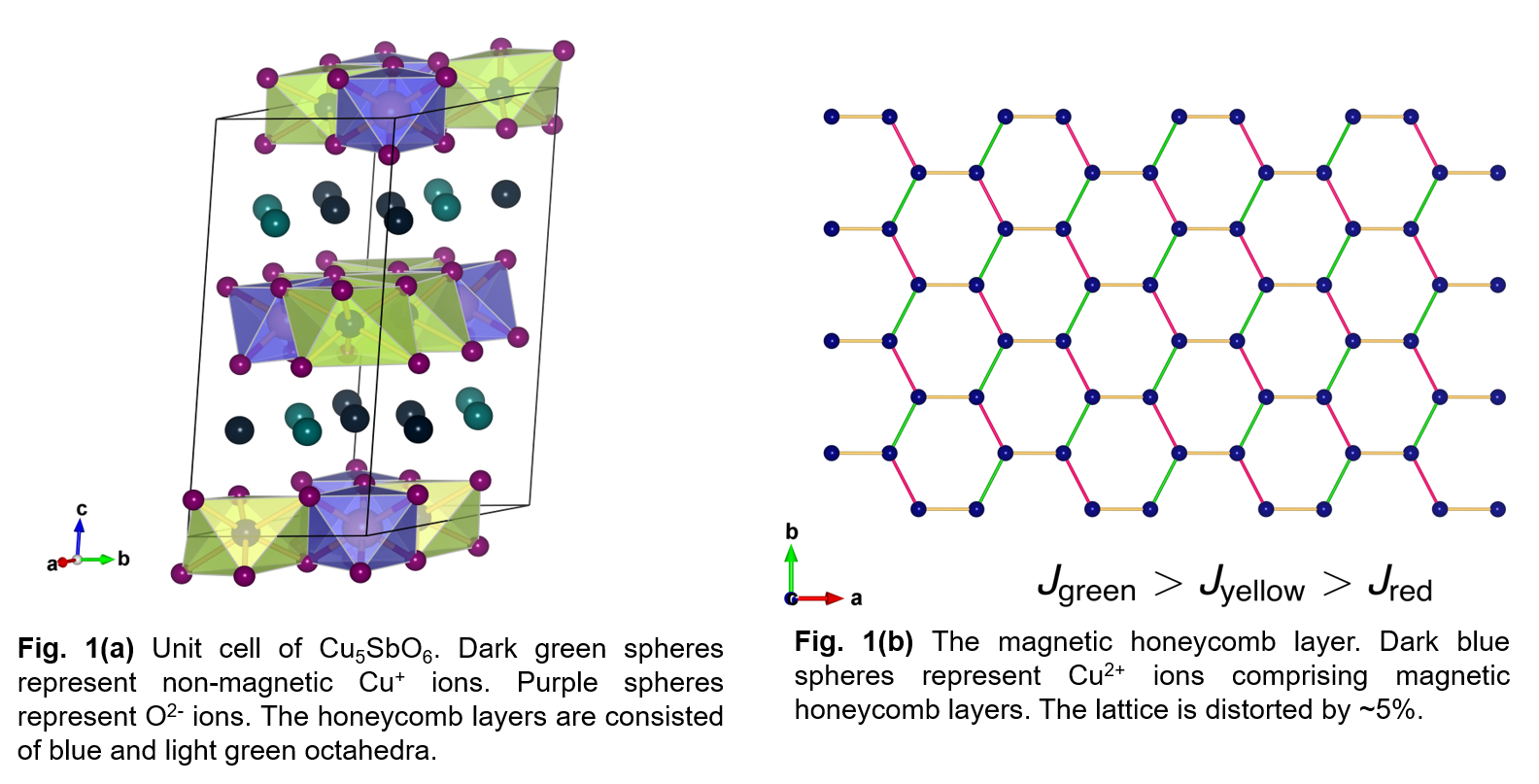

The two-dimensional (2D) frustrated honeycomb Heisenberg antiferromagnet can support several kinds of ground states according to the ratio α defined to be J2/J1 where J1 is nearest-neighbor interaction and J2 next-nearest-neighbor one. For small and intermediate values of α Néel order, selected by order by disorder, and plaquette resonating valence bond can be formed, respectively. Many theoretical studies agree on the dimer ground state with large value of α. However, the range of α in which this system assumes such ground state is still arguable.
There is a handful of materials in which frustrated honeycomb lattice is realized. Among those is a delafossite-derived compound Cu5SbO6 consisting of Cu2+ (S = 1/2) arranged in distorted honeycomb layers stacked in c axis. A study of the temperature dependence of magnetic susceptibility of Cu5SbO6 shows that the dimer ground state is formed in this magnetic material with a singlet-triplet excitation of ~189 K corresponding to ~16 meV. The crystal structure of Cu5SbO6 is displayed in Fig. 1. The unit cell is monoclinic with lattice parameters a = 8.92 Å, b = 5.59 Å, c = 11.8 Å, and β = 103.6°.

In order to get more insight into the nature of dimer ground states in 2D honeycomb magnets, inelastic neutron scattering is beneficial in investigating magnetic excitation of this compound. Inelastic neutron scattering provides an access into the dispersion spectrum of magnetic materials. The dispersion relation can, then, identify the nature of interactions within the layers. Therefore, spin dynamics of Cu5SbO6 should be investigated, and magnetic interactions of spin pairs can be extracted. Eventually, the result would be able to justify whether the observation is in agreement with theoretical predictions.